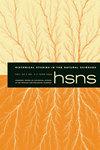渗出的海洋
IF 0.3
3区 哲学
Q2 HISTORY & PHILOSOPHY OF SCIENCE
引用次数: 0
摘要
科学史学者越来越多地转向海洋空间,特别是从 20 世纪中期开始,海洋学在第二次世界大战期间和之后具有了新的战略和经济意义。然而,冲突史对海洋学史学的过度决定掩盖了帝国--它的连续性和目的--在海洋科学和政治的转变中所扮演的角色。这篇文章以近期的研究为基础,试图恢复帝国在二十世纪中叶海洋科学、政治和法律建设中的持久作用及其长期阴影。以深海沉积物为重点,我将挑战者号(1872-1876 年)博物学家兼挑战者号办公室主任约翰-默里(John Murray)的研究成果与美国经济地质学家约翰-梅罗(John Mero)的研究成果进行了对比分析,后者在二十世纪中叶将所有海底都描述为巨大矿产资源的宝库。默里的沉积学分类和表述,以及他收集的关于全球渗出物(包括结核)的数据,为梅罗的工作奠定了大量基础。而且,默里和梅罗都利用沉积物来论证专有立场,其前提是资源发现的时间优先权,以及基于科学知识和技术能力的独家使用权,两者都被平等使用权和机会的说法所掩盖。这些数据和实践帮助北方科学家建立并保持了对海底知识及其资源价值的控制,因为后殖民主义和冷战的推动重新安排了海上的政治和经济秩序。对深海渗出物的历史化研究揭示了有关国际海底未来的当代冲突的特点,提出了 "谁来决定海底的价值 "这一问题。本文章由计算机程序翻译,如有差异,请以英文原文为准。
Oceans of Ooze
Historians of science increasingly turn to ocean spaces, especially from the mid–twentieth century, when oceanography adopted new strategic and economic significance during and after World War II. Yet, the overdetermination of oceanography’s historiography by histories of conflict obscures the role that empire—its continuities and its ends—played in the transformation of ocean science and politics at the same time. This essay builds on recent work seeking to recover the role of empire’s endurance and its long shadows in the construction of mid-twentieth-century ocean science, politics, and law. Focusing on deep-sea sediments, I parse the work of H.M.S. Challenger (1872–1876) naturalist-cum-Challenger Office director John Murray alongside that of American economic geologist John Mero, who in the mid–twentieth century articulated all seabeds as storehouses of vast mineral wealth. Murray’s sedimentological taxonomies and representations as well as his collected data on global oozes, nodules included, formed much of the basis for Mero’s work. And, both Murray and Mero leveraged sediments to argue for proprietary positions premised on priority-in-time for resource discovery claims, and exclusive access based upon scientific knowledge and technical ability, both masked by tropes of equal access and opportunity. These data and practices helped Northern scientists build and maintain control over knowledge of the seabed and the value of its resources, as postcolonial and Cold War impetuses rearranged political and economic order at sea. Historicizing abyssal oozes illuminates the character of contemporary conflicts over the future of the international seabed, asking, who determines how the seabed will be valued?
求助全文
通过发布文献求助,成功后即可免费获取论文全文。
去求助
来源期刊

Historical Studies in the Natural Sciences
社会科学-科学史与科学哲学
CiteScore
1.00
自引率
0.00%
发文量
24
审稿时长
>12 weeks
期刊介绍:
Explore the fascinating world of Historical Studies in the Natural Sciences, a journal that reveals the history of science as it has developed since the 18th century. HSNS offers in-depth articles on a wide range of scientific fields, their social and cultural histories and supporting institutions, including astronomy, geology, physics, genetics, natural history, chemistry, meteorology, and molecular biology. Widely regarded as a leading journal in the historiography of science and technology, HSNS increased its publication to five times per year in 2012 to expand its roster of pioneering articles and notable reviews by the most influential writers in the field.
 求助内容:
求助内容: 应助结果提醒方式:
应助结果提醒方式:


